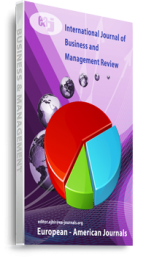In this paper, an ARDL (m p, q, r, s, s) log-linear export demand function is estimated to find the long-run impacts of world income, relative price, real exchange rate, and employment on exports of the garment sector of Bangladesh using modern econometric techniques based on time series data from 1979-2020. Long-run significant relationships among exports, relative price, real exchange rate, world income and employment are found. The VEC model’s estimated results indicate short-run bidirectional causalities between different pairs of variables. The long-run causalities are found while exports and employment are the endogenous variables. The estimated results indicate that both long-run and short-run exports are influenced positively and significantly by world income. Relative price, real exchange rate and employment carry negative signs for both long-run and short-run in which the effects of relative price and real exchange rate are statistically significant in the long run which implies that a 1% decrease in relative price, exports will increase by 1.256%. It is found that the coefficient of ECM(-1) is -0.9705 which is statistically significant at any significance level, suggesting that when the export value is above its equilibrium level, it will adjust about 97.05% within the first year. The full convergence process to reach the equilibrium level takes more than a year. Thus, this study will help the economists, policymakers and stakeholders of the garment sector of Bangladesh to predict the dynamics of export demand due to changes in world income level, relative price, real exchange rate and employment.
Keywords: export demand function, garment sector of Bangladesh, long-run relationships, short-run and long-run elasticities., vec model

